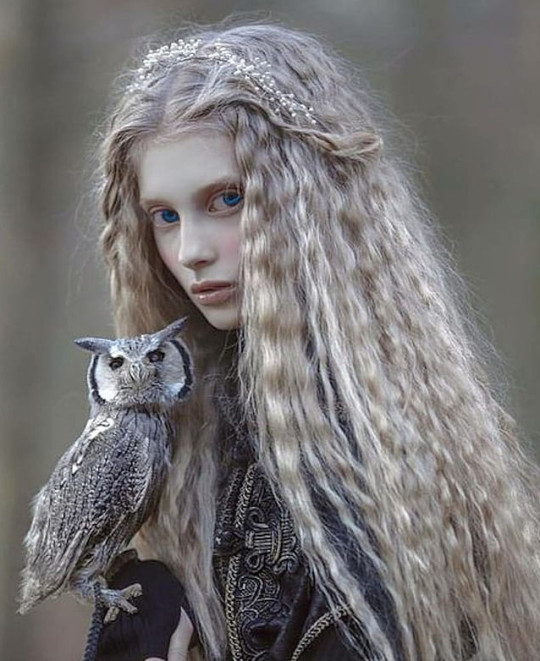#estonian mythic motifs
Explore tagged Tumblr posts
Text

Legends and myths about trees
Forest myths, Estonian traditional beliefs (4)
The world of the Estonians’ ancestors – Mythical motifs in Estonian runic songs
The Estonian literary mythology describes the following pantheon: The supreme god, the god of all living things, is Taara (variations of the name include Tooru, Tharapita and Tarapitha), also known as Uku or Jumal, is a prominent god in Estonian mythology, with a strong resemblance to the Finnish Ukko and the Germanic Thor. He is celebrated in sacred oak forests around Tartu. The god of thunder is Uku. Uku's daughters are Linda and Jutta, the queen of the birds. Uku has two sons: Kõu (Thunder) and Pikker (Lightning). Pikker possesses a powerful musical instrument, which makes demons tremble and flee. He has a naughty daughter, Ilmatütar (Weather Maiden).
Estonian legends about giants (Kalevipoeg, Suur Tõll, Leiger) may be a reflection of Germanic (especially Scandinavian) influences. Giants themselves in some stories stood as protectors against such Germanic influences, such as invasion. There are numerous legends interpreting various natural objects and features as traces of Kalevipoeg's deeds. The giant has merged with Christian Devil, giving birth to a new character – Vanapagan (a cunning demon living on his farm or manor) and his farm hand Kaval-Ants ("Crafty Hans").
Other mythical motifs from Estonian runic songs:
a mighty oak grows into the sky, is then felled and turned into various mythical objects
Sun, Moon and Star are the suitors of a young maiden, she finally accepts the Star
a crafty blacksmith forges a woman of gold but is not able to give her a soul or a mind
a holy grove starts to wither after having been desecrated by a love-making couple; only sacrificing nine brothers cleanses it
mighty heroes are not able to kill a terrible giant ox, but a little brother is
a woman is forced to kill her daughter who then goes to live in the heaven as the Air Maiden
a girl finds a fish and asks her brother to kill it – there is a woman inside the fish
young girls go out at night and young men from the holy grove (or the land of the dead) seduce them by offering them riches
a lake travels to another place when it has been desecrated by an inconsiderate woman or an incestuous couple

木にまつわる伝説・神話
森の神話・エストニアの民間伝承 (4)
エストニア人の祖先の世界 〜 ルーン文字の歌詞に見られる神話のモチーフ
エストニアの文学的神話には、次のようなパンテオンが描かれている: すべての生きとし生けるものの神である最高神はタアラであり、タルトゥ周辺の神聖なオークの森で祭られている。タアラ(トオル、タラピタなどの異称がある)は、ウクまたはユマルとも呼ばれるエストニア神話の著名な神で、フィンランドのウッコやゲルマン民族のトールに類似している。タルトゥ周辺の神聖なオークの森で祭られている。ウクの娘はリンダと鳥の女王ユッタ。ウクには2人の息子がいる: コオウ(雷)とピッカー(稲妻)である。ピッカーは強力な楽器を持っており、悪魔を震え上がらせて逃走させる。彼にはいたずらっ子の娘イルマチュタル(天気の乙女)がいる。
巨人(カレヴィポエグ、スオトール、レイガー)に関するエストニアの伝説は、ゲルマン人(特にスカンジナビア人)の影響を反映したものかもしれない。巨人そのものが、侵略などのゲルマン人の影響から身を守る存在であったという話もある。様々な自然物や特徴をカレヴィポエグの行いの痕跡と解釈する伝説が数多くある。この巨人はキリスト教の悪魔と融合し、ヴァナパガン(彼の農場や荘園に住む狡猾な悪魔)と彼の農夫カヴァル=アンツ(「狡猾なハンス」)という新しいキャラクターを生み出した。
エストニアのルーン文字の歌詞には、他にも神話的なモチーフがある:
樫の木が空に向かって伸び、伐採され、さまざまな神話上のオブジェに変わる。
太陽、月、星は若い乙女の求婚者であり、彼女は最終的に星を受け入れた。
狡猾な鍛冶屋が金の女を拵えたが、彼女に魂や心を与えることはできなかった。
聖なる木立が、愛し合うカップルによって冒涜された後、枯れ始めるが、9人の兄弟を生贄にすれば浄化される。
強大な英雄は恐ろしい巨大な牛を殺すことができないが、弟は殺すことができる。
ある女性が自分の娘を殺さざるを得なくなり、その娘は天界で空気の乙女として生きることになる。
少女が魚を見つけ、兄に殺してくれるよう頼む - その魚の中に女がいる。
若い娘が夜に外出すると、聖なる木立(または死者の国)から来た若い男たちが金持ちを差し出して誘惑する。
軽率な女や近親相姦のカップルによって冒涜された湖は、別の場所に移動する。
#trees#tree myths#tree legend#folklore#legend#mythology#estonian mythology#runic songs#estonian mythic motifs#forest#nature#art
121 notes
·
View notes